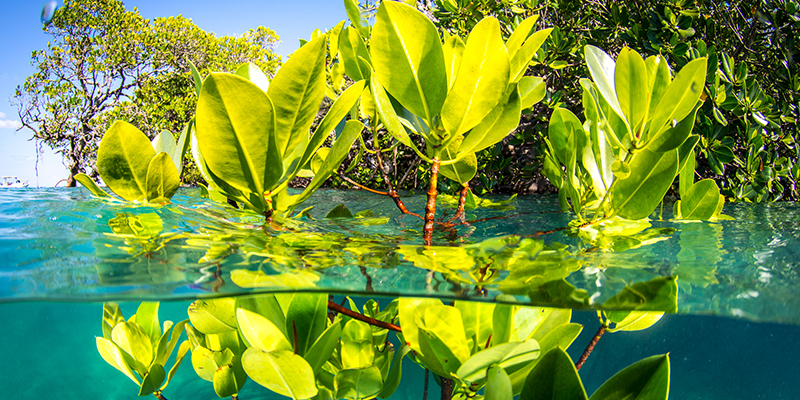
Enabling Nature to Restore Itself
As the northern hemisphere springs to life, we’re celebrating ecosystem restoration all month long.
Ecosystem restoration includes preventing, halting, and reversing the degradation of ecosystems worldwide. This integral approach to protecting nature has led the United Nations to dedicate the next decade to ecosystem restoration.
11th Hour Racing’s grant program supports ecosystem restoration projects that improve water quality, bolster coastal resilience, and sequester carbon through coastal habitat restoration. These exciting projects are currently underway in multiple countries and include restoring seagrass meadows, replanting mangrove forests, salt marsh adaptation, installing oyster reefs, and more.
Pictured left, a diagram about investing in blue carbon can support coastal ecosystem restoration and mitigate climate change. Image credit: Holly Fisher, spence-creative.com

Borderlands Restoration, based in Sonora, Mexico, partnered with the Comcáac Indigenous Community working to restore, enhance, and protect mangrove estuaries and seagrass beds in the Gulf of California. The site covers roughly 75,000 acres threatened by climate change, overfishing, and tourism development. The organization is working to restore and protect 5,000 acres of mangroves and 2,500 acres of seagrass. Check out the project’s progress in this recent blog, Sowing the Promise of Blue Carbon on the Watery Edge of a Blue Desert.

Seacology works with islanders worldwide to protect threatened ecosystems and help local communities gain access to more resources. Most recently, 11th Hour Racing is supporting the organization’s work in the Dominican Republic. The project, located in El Tablón Ecological Park, engages local communities to advance mangrove conservation and restoration efforts and supports developing a honey bee farm that will provide a source of income by selling honey.

Save the Bay is leading efforts in Rhode Island to help adapt salt marshes to sea-level rise and slow the future loss of these vital coastal ecosystems. These efforts include both restoration and education to instill the importance of these ecosystems in the region. Current grant work includes planting 22,000 beach grass and native plants to reduce runoff pollution while also developing a statewide Salt Marsh Stewardship Program for training and engaging volunteers to monitor and restore salt marshes.

Over the next year, 11th Hour Racing will support Billion Oyster Project’s ambitious oyster hatchery operations, in which the organization aims to produce 18 million juvenile oysters and introduce them to NY Harbor. Among other ecosystem benefits, adult oysters are capable of improving water quality by filtering more than a gallon of water every hour.
To learn more about this work, view all of our ecosystem restoration grantees here.
Header image credit: Matt Curnock / Ocean Image Bank
